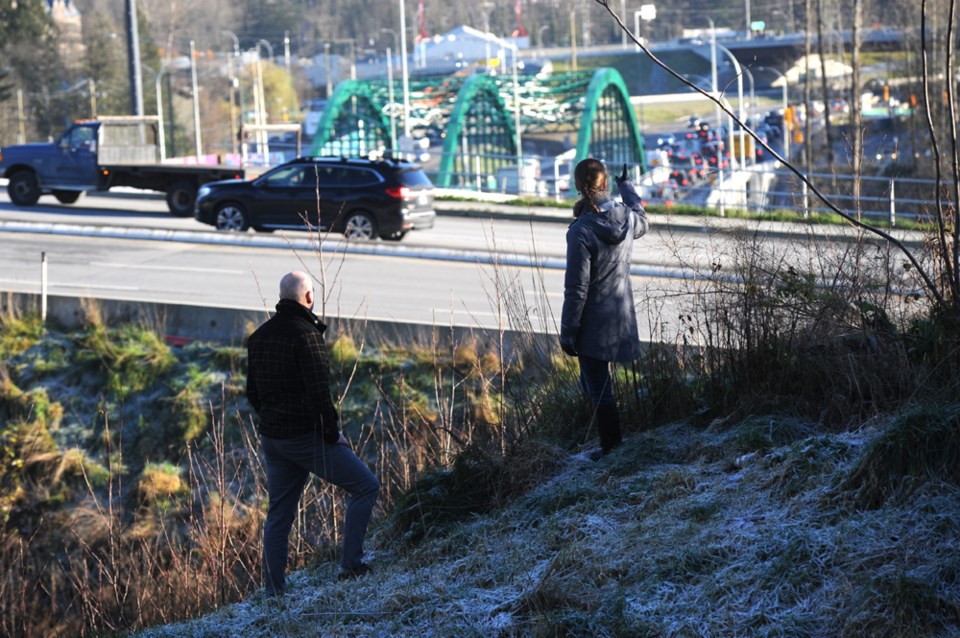After years of planning and heavy construction work, the $200-million Lower Lynn Improvement Project is now largely complete.
The project to improve traffic flow leading to the Ironworkers Memorial Second Narrows Crossing has been in the works since 2014. The Ministry of Transportation and Infrastructure contractors broke ground on it in 2016.
Residents and commuters will notice Highway 1 still backs up at rush hour, when there’s a blue bird day on the ski hills or when a stall or collision has one of the lanes blocked – but, unlike before, traffic on the highway tends to move now, rather than be hobbled in a stop-and-go lurch.
“We're finding that during heavy traffic flows, that those traffic flows are actually flushing through much quicker than they had in the past,” said Jay Porter, project manager. “And even when we've had traffic incidences on the bridge, we've noticed that once that's been cleared, the traffic is able to clear on the highway much quicker than it did.”
Traffic modelling done from the ministry during the planning stages predicted the amount of time it would take to reach mid-span of the bridge from the top of the Cut would be reduced by half.
Once a project is completed, it typically takes a few months for drivers’ behaviours to shift and settle into new patterns, Porter said. The ministry is collecting fresh data on traffic and collisions, and Porter said there will be regular meetings with local governments to see that both provincial and municipal traffic signals in the area optimized to keep things moving.
Mayor Mike Little said he was pleased to see the project completed after many years of disruptions, adding he too is seeing the benefits of the new interchanges.
“I think a lot of people had different expectations for the project but we recognized from the very beginning that it wasn't going to add one bit of capacity southbound or northbound over the bridge. That's another project that we all have to work towards,” he said. “But I’m optimistic that the main deliverables of the project are benefiting the community…If the bridge is flowing and the highway is flowing, that's generally good for everyone.”
The project should also reduce the number of collisions that really choke traffic, Little said.
The one task remaining – a rather important one – is that the ministry is still waiting on some electronic components currently held up across the border, which will allow the combined Main Street/Dollarton Highway on-ramp to sense how many drivers are queued up on both sides and allocate green lights accordingly to flush out traffic. Currently, the signal operates on a timer alone. The adaptive system should be online and reducing back-ups along Main Street soon, Porter said.
Both Porter and Little said they hope more people will start getting on the highway at the new Mountain Highway on-ramp, spreading out the demand.
The project also includes safer active transportation routes through the area, public art and habitat improvements on Lynn Creek.
Little said he’d also like to see the new collector lane on the Cut be extended all the way to Lynn Valley.
“There's enough land to do it. And I hope that can be the next project that gives us the ability to move between Seymour and Lynn Valley without having to fully come onto the highway,” he said.
In the short-term, the only thing that can be done to improve congestion is for people to cut back on the number of discretionary vehicle trips they take, Little said.
Longer term, all three North Shore municipal governments and both First Nations are making a push for a rapid transit line to be included in the next round of major improvements from TransLink, Little said.
“That's a critical piece – giving people a suitable alternative to riding in their car in order to be able to get north and south,” he said.
The Lower Lynn Improvement Project was funded by the province, the feds and the District of North Vancouver.
In a statement, North Vancouver-Lonsdale NDP MLA Bowinn Ma said she too was hearing positive reviews.
“It won’t solve all of the North Shore’s transportation challenges but I’ve already heard from commuters who describe their experience as being much improved, especially when looking to travel past the bridges without getting onto them,” she said. “Residents on the North Shore have been very patient over the last many years as this project has evolved and changed shape over time. I know people will be happy to see the area stabilize with the project’s long-awaited completion.”
The project has spanned many terms at all three levels of government, Little noted, and many of the political leaders who helped get the project off the ground – like Andrew Saxton, Richard Walton and Jane Thornthwaite – are no longer in politics. They, too, deserve credit, he said.



